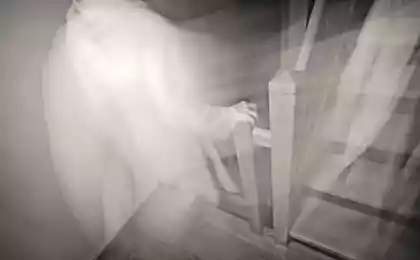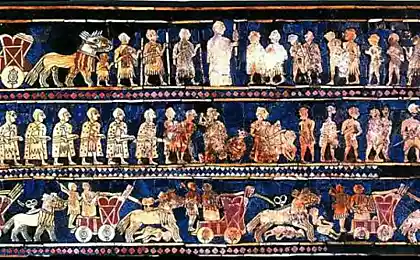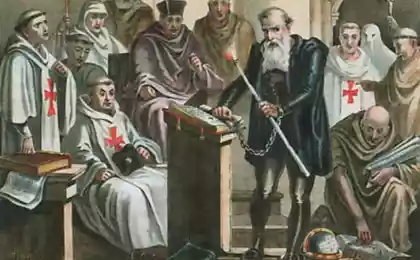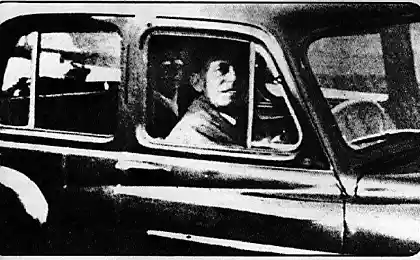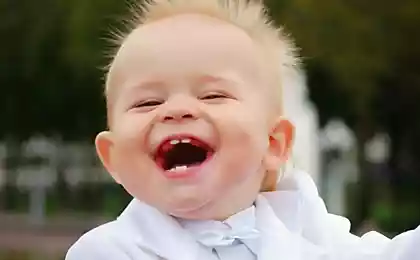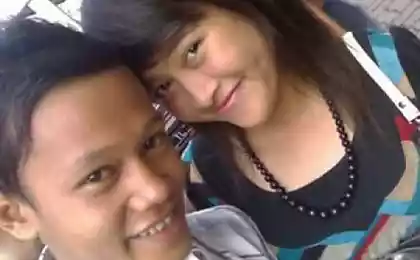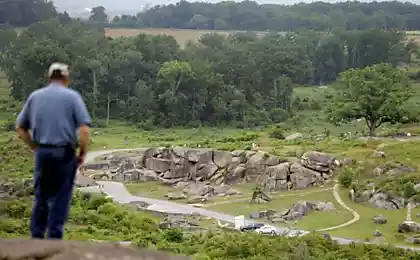1070
Ghosts in the photographs of the 19th century (12 photos)
In the era of the birth of photography one of the most vulgar genres of this art form considered spiritualist photographs.
This promotional photo taken by photographer Eugène Thibault in 1863. It is obviously a humorous character and the show promotes the French magician Henri Robin, who gave "phantasmagoric" presentation, during which the ghost. But at the same time to gain popularity so-called Ouija Photo, which include seriously.
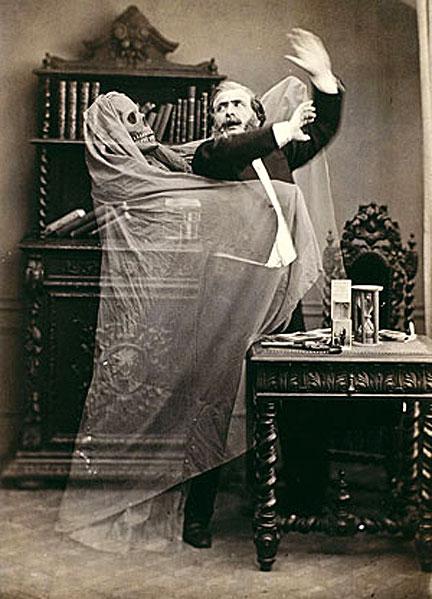
Ghosts and other transparent intangible entity (eg, guardian angels at the children's cradle) were not such a rarity in the photographs of the 19th century. Usually, such things are done for the entertainment of the public, which considers a stereo pair. At the end of the 1850s London Stereoscopic Company issued a series stereokartochek, which is called - "Ghosts in the stereoscope." But hardly anyone could take these pictures seriously. Many photographers consider things such manifestations of bad taste and an insult to the noble art of photography.

In 1861 the engraver and amateur photographer from Boston - William Mamler made his self-portrait. Film development When he discovered that the portrait there is a figure in which he found his cousin who died twelve years ago. This event is considered the beginning of a new photographic practice, which has become a very profitable business for those who possess a sufficient degree of skill to deal with them. Mamler announced his interesting experience the general public and found that a lot of people would like to once again feel the presence of a number of expensive dead, even such exotic way. So much that he had to leave his main profession and retraining as a photographer. Spiritist photographer.
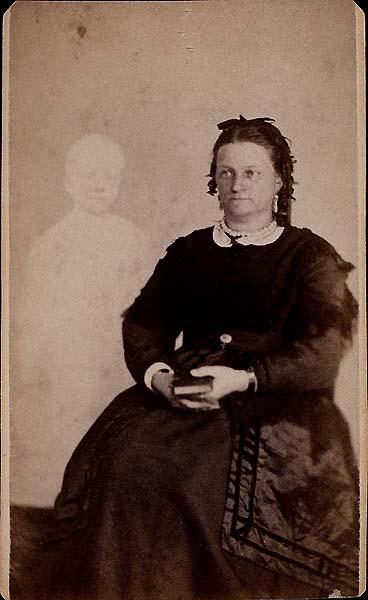
Throughout the 1860s Mamler thrived, gained fame, prestige and financial well-being. All this helped him a lot of marketing talent - he himself promoted, bringing samples of their products to the collection of spiritualists and publishing advertisements in thematic spiritualistic journals. Spiritualist photos cost much more expensive than a portrait. In America, the 1860s you could get your picture for a few cents in a conventional studio, and Photo Mamlera cost 5 to $ 10 ($ 10 mid-19th century, corresponds to about $ 136 early 21 th). But the spirits - nature is capricious and demanding, deserving of respect and did not tolerate frivolous approach.
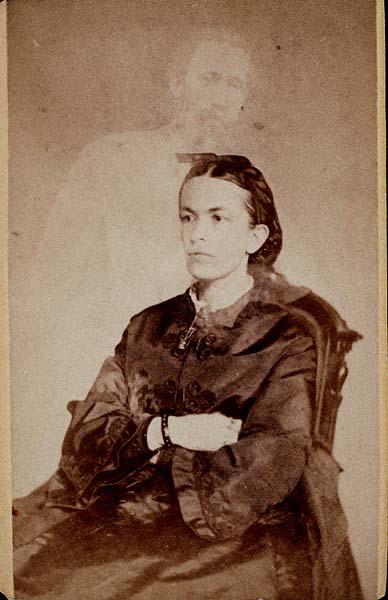
In 1869, the correspondent of the newspaper New York World PV Hickey wrote an article dedicated to the spiritualist photography and specifically Mamleru, accusing him of cheating gullible public. Hickey's point of view shared by many photographers, who believed that Mamler not only fool people, but also undermines the credibility of photography as a means of facing the reality of the visible, are designed to tell the truth. And indeed, as the authors of the text that I read while preparing this post - vigorous development Ouija photos on one side (for which demand greatly exceeded supply) and the angry voices of skeptics on the other hand, the beginning of the 1870s marked the beginning of a long struggle between Science and Seance. Hickey Mamlera initiated a serious test, which carried out a MJ. Tucker, who visited the studio, get a photo and did not recognize the ghost, in the company of which he was the photographer captured. But in advertising Ouija photos Mamlera was clearly stated that you will certainly see the portrait of his dear friend or relative. This unfair advertising has become a formal occasion Mamlera start against a lawsuit that lasted for seven days and was widely covered in the press.
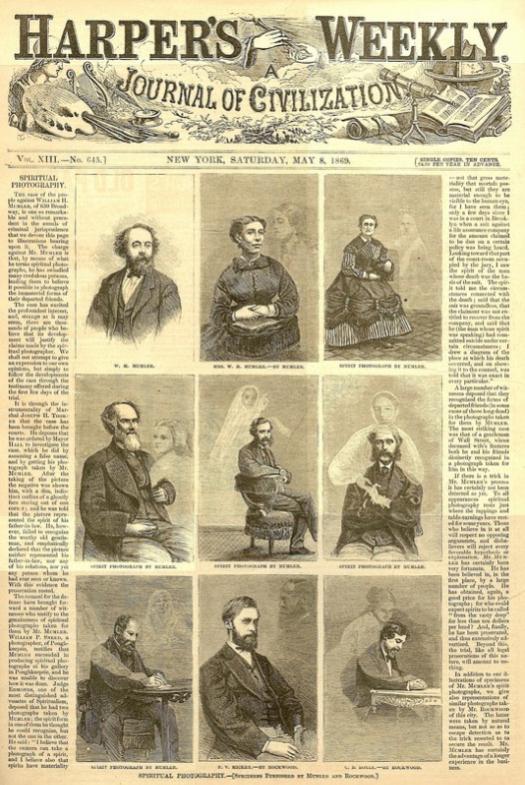
On the side Mamlera acted Community spiritualists and sympathetic audience, which received from him what I wanted and trusted him. In the end, the trial has ended, "draw." The judge spoke in the way, which, of course, everyone understands that Mamler crook, but the prosecution failed to provide convincing evidence of this.
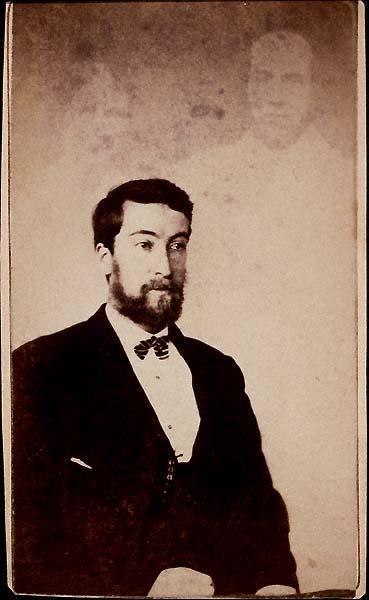
Some popular biographies Mamlera said that after the trial, his reputation shattered, career went into decline, the business gradually fell into disrepair, and Mamler died in poverty. In fact, quite the opposite! The trial established Mamleru additional advertising and strengthen its credibility. It was after the process - in the early 1870s Mamler made his most famous photographs - portraits of the young medium of Massachusetts, known as the oddly named Master Herrod and the widow of President Lincoln - Mary Todd Lincoln with the ghost of her husband.
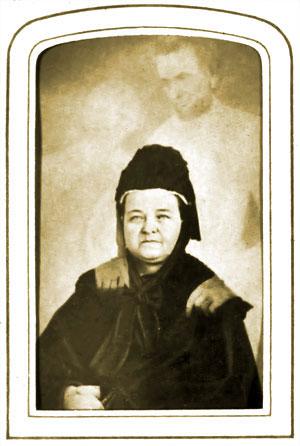
...

At the same time Mamlera attended the well-known publicist, editor of The Waverley Magazine - Moses A. Dow. Doe became interested in spiritualism after the death of his young assistant Mabel Warren, the spirit of which he communicated via mediums. During one of the sessions recommended Mabel herself Dow Mamlera visit to be photographed together on memory and asked in what dress she should come.
Here is the picture.

Of course, no one thought that the spirits wear dresses - it's just some ethereal emanation, taking a particular visible form by the will of the spirit who wants to please his friend alive.)
In Europe, Ouija picture came a little later, but was also very popular. In general surge of interest in it, as well as spiritualism in general, clearly associated with the traumatic events of history - the American Civil War, the Franco-Prussian war and the Commune of Paris, of course, the First World War. Spiritualistic known European photographers have been, for example, the Englishman Frederick Hudson and Frenchman Edouard Isidore Bug.
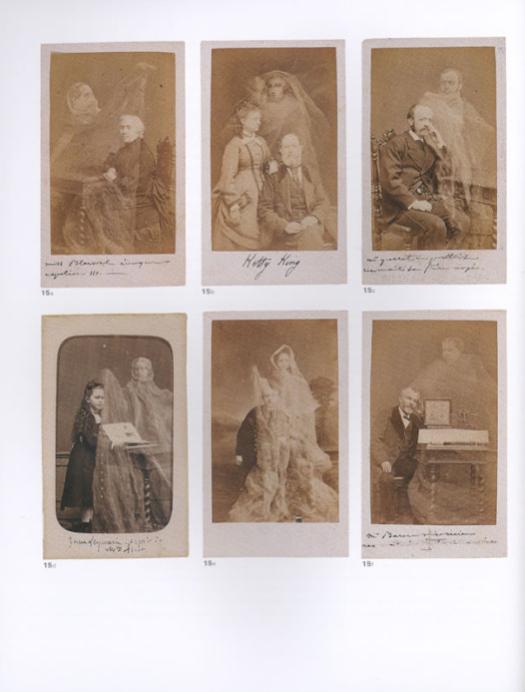
Typically, a photographer working in tandem with the medium, which ensures the presence of supernatural beings. This is understandable. Why would the spirits began to appear in the studio for a reason. Such "assistants" are often pre-communicated with customers unobtrusively figuring out whom exactly they expect to see in the photograph. Edouard Bug, incidentally, also been prosecuted, but, unlike Mamlera immediately pleaded guilty and did not deny, when the investigation has found in his studio head mannequins, masks and other props, and found that one of the imprinted on pictures "spirits" is quite alive and well. Despite the confession, many customers Bugge thought he was an honest man, and made his confession under duress. Well, maybe sometimes it still resorted to the little tricks, but only in cases where its strength (Bug photographed in a partial trance) weakened, but this can be excused.
After the process Bug pointedly turned into an "anti-spiritualist" photographer, doing the same thing, only with the opposite sign, stressing that these photos are a falsification, stunts, tricks. All this was good for his reputation. His career was very short.
"Anti-Ouija" Photo Bug. "Phantom" holds a table with the inscription: Better Mesmer and Cagliostro. Ghosts of choice. Success is guaranteed. Invisible manipulation under the noses of the client. Tricks mediums.
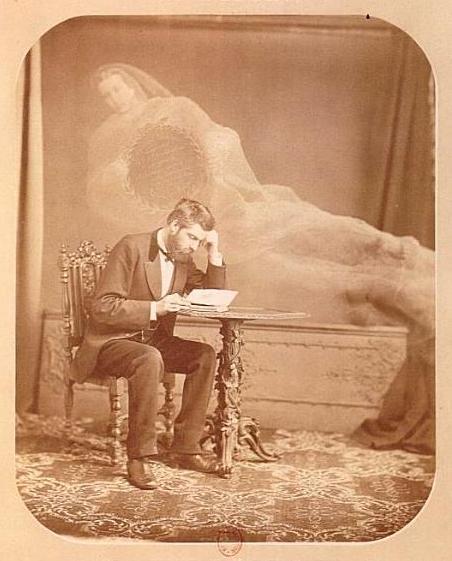
In general, none of the European photographers have not reached such fame and commercial success as Mamler but Ouija picture in one form or another to maintain its position until the end of 1930. Now, of course, such commercial practices do not exist, but ...)))
via agnesvogeler
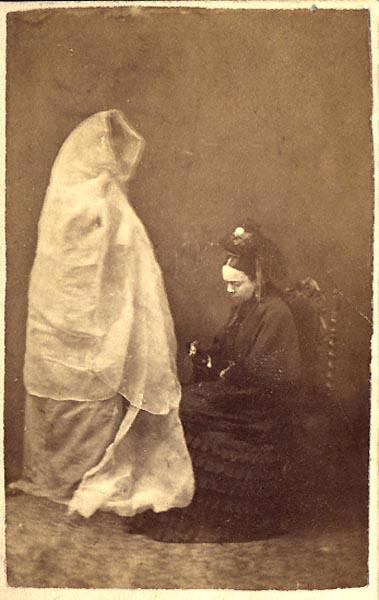
Source:
This promotional photo taken by photographer Eugène Thibault in 1863. It is obviously a humorous character and the show promotes the French magician Henri Robin, who gave "phantasmagoric" presentation, during which the ghost. But at the same time to gain popularity so-called Ouija Photo, which include seriously.

Ghosts and other transparent intangible entity (eg, guardian angels at the children's cradle) were not such a rarity in the photographs of the 19th century. Usually, such things are done for the entertainment of the public, which considers a stereo pair. At the end of the 1850s London Stereoscopic Company issued a series stereokartochek, which is called - "Ghosts in the stereoscope." But hardly anyone could take these pictures seriously. Many photographers consider things such manifestations of bad taste and an insult to the noble art of photography.

In 1861 the engraver and amateur photographer from Boston - William Mamler made his self-portrait. Film development When he discovered that the portrait there is a figure in which he found his cousin who died twelve years ago. This event is considered the beginning of a new photographic practice, which has become a very profitable business for those who possess a sufficient degree of skill to deal with them. Mamler announced his interesting experience the general public and found that a lot of people would like to once again feel the presence of a number of expensive dead, even such exotic way. So much that he had to leave his main profession and retraining as a photographer. Spiritist photographer.

Throughout the 1860s Mamler thrived, gained fame, prestige and financial well-being. All this helped him a lot of marketing talent - he himself promoted, bringing samples of their products to the collection of spiritualists and publishing advertisements in thematic spiritualistic journals. Spiritualist photos cost much more expensive than a portrait. In America, the 1860s you could get your picture for a few cents in a conventional studio, and Photo Mamlera cost 5 to $ 10 ($ 10 mid-19th century, corresponds to about $ 136 early 21 th). But the spirits - nature is capricious and demanding, deserving of respect and did not tolerate frivolous approach.

In 1869, the correspondent of the newspaper New York World PV Hickey wrote an article dedicated to the spiritualist photography and specifically Mamleru, accusing him of cheating gullible public. Hickey's point of view shared by many photographers, who believed that Mamler not only fool people, but also undermines the credibility of photography as a means of facing the reality of the visible, are designed to tell the truth. And indeed, as the authors of the text that I read while preparing this post - vigorous development Ouija photos on one side (for which demand greatly exceeded supply) and the angry voices of skeptics on the other hand, the beginning of the 1870s marked the beginning of a long struggle between Science and Seance. Hickey Mamlera initiated a serious test, which carried out a MJ. Tucker, who visited the studio, get a photo and did not recognize the ghost, in the company of which he was the photographer captured. But in advertising Ouija photos Mamlera was clearly stated that you will certainly see the portrait of his dear friend or relative. This unfair advertising has become a formal occasion Mamlera start against a lawsuit that lasted for seven days and was widely covered in the press.

On the side Mamlera acted Community spiritualists and sympathetic audience, which received from him what I wanted and trusted him. In the end, the trial has ended, "draw." The judge spoke in the way, which, of course, everyone understands that Mamler crook, but the prosecution failed to provide convincing evidence of this.

Some popular biographies Mamlera said that after the trial, his reputation shattered, career went into decline, the business gradually fell into disrepair, and Mamler died in poverty. In fact, quite the opposite! The trial established Mamleru additional advertising and strengthen its credibility. It was after the process - in the early 1870s Mamler made his most famous photographs - portraits of the young medium of Massachusetts, known as the oddly named Master Herrod and the widow of President Lincoln - Mary Todd Lincoln with the ghost of her husband.

...

At the same time Mamlera attended the well-known publicist, editor of The Waverley Magazine - Moses A. Dow. Doe became interested in spiritualism after the death of his young assistant Mabel Warren, the spirit of which he communicated via mediums. During one of the sessions recommended Mabel herself Dow Mamlera visit to be photographed together on memory and asked in what dress she should come.
Here is the picture.

Of course, no one thought that the spirits wear dresses - it's just some ethereal emanation, taking a particular visible form by the will of the spirit who wants to please his friend alive.)
In Europe, Ouija picture came a little later, but was also very popular. In general surge of interest in it, as well as spiritualism in general, clearly associated with the traumatic events of history - the American Civil War, the Franco-Prussian war and the Commune of Paris, of course, the First World War. Spiritualistic known European photographers have been, for example, the Englishman Frederick Hudson and Frenchman Edouard Isidore Bug.

Typically, a photographer working in tandem with the medium, which ensures the presence of supernatural beings. This is understandable. Why would the spirits began to appear in the studio for a reason. Such "assistants" are often pre-communicated with customers unobtrusively figuring out whom exactly they expect to see in the photograph. Edouard Bug, incidentally, also been prosecuted, but, unlike Mamlera immediately pleaded guilty and did not deny, when the investigation has found in his studio head mannequins, masks and other props, and found that one of the imprinted on pictures "spirits" is quite alive and well. Despite the confession, many customers Bugge thought he was an honest man, and made his confession under duress. Well, maybe sometimes it still resorted to the little tricks, but only in cases where its strength (Bug photographed in a partial trance) weakened, but this can be excused.
After the process Bug pointedly turned into an "anti-spiritualist" photographer, doing the same thing, only with the opposite sign, stressing that these photos are a falsification, stunts, tricks. All this was good for his reputation. His career was very short.
"Anti-Ouija" Photo Bug. "Phantom" holds a table with the inscription: Better Mesmer and Cagliostro. Ghosts of choice. Success is guaranteed. Invisible manipulation under the noses of the client. Tricks mediums.

In general, none of the European photographers have not reached such fame and commercial success as Mamler but Ouija picture in one form or another to maintain its position until the end of 1930. Now, of course, such commercial practices do not exist, but ...)))
via agnesvogeler

Source:

